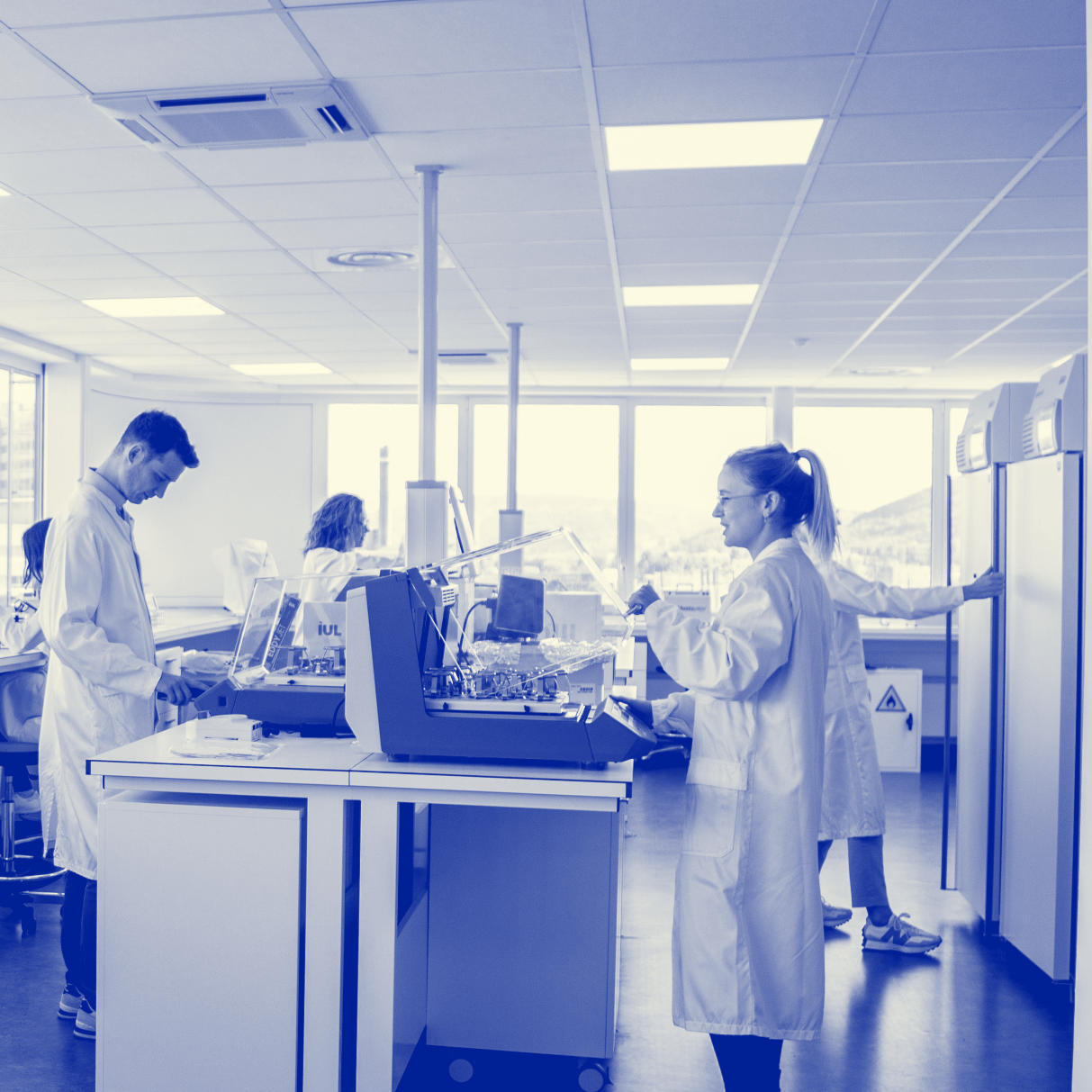
 All articles
All articles
Antimicrobial activity testing: measuring, understanding, and anticipating resistance
Every day, antimicrobials face their natural adversaries: bacteria.
But in this silent war, nothing remains static — bacteria learn, adapt, defend themselves… and develop increasingly sophisticated resistance mechanisms.
Smaltis is a microbiology CRO specialized in the study of antimicrobial resistance and the preclinical development of antimicrobials.
We support the developers of new antibiotics, peptides, biocides, and other anti-infective agents with a comprehensive panel of in vitro assays designed to meet the most demanding R&D challenges.

Measuring antimicrobial efficacy: MIC, MBC and Time-Kill Curves
Before exploring resistance mechanisms, it is essential to accurately quantify the activity of an antimicrobial compound. Two key values must be determined:
The MIC (Minimum Inhibitory Concentration) represents the lowest concentration of an antimicrobial that prevents bacterial growth.
The MBC (Minimum Bactericidal Concentration) reflects the concentration required to eradicate the bacterial population rather than merely inhibit its growth.
At Smaltis, these assays are performed in compliance with EUCAST or CLSI guidelines to generate robust, internationally comparable data.
MIC/MBC values are far more than catalog figures — they form essential anchors for PK/PD approaches, linking:
• in vivo exposure (Cmax, AUC, time above threshold)
• with in vitro activity, to guide dose selection, dosing regimens, and the design of (pre)clinical studies.
To go beyond this “static” view, we perform Time-Kill Curves, which track bacterial population dynamics over time in the presence of the compound, alone or in combination.
They allow researchers to:
• assess the speed and extent of bactericidal action,
• visualize potential regrowth or tolerance phenomena,
• and compare killing profiles across candidates.
In practice, the combination of these assays provides a complete, static-and-dynamic picture of your antimicrobial candidate’s efficacy in vitro.
Exploring synergies: FIC Index
Infections are rarely controlled by a single treatment, and optimizing therapeutic combinations has become a major challenge in anti-infective development.
The FIC Index (Fractional Inhibitory Concentration) assesses interactions between two antimicrobials — synergy, additivity, indifference, or antagonism.
Complementing efficacy data, the FIC Index provides a specific read-out of compound interactions, essential for optimizing antibiotic combinations or antibiotic-adjuvant strategies and limiting the emergence of resistance.
Anticipating resistance: Serial Passage & Spontaneous Mutants
A highly active candidate in vitro today may lose its effectiveness tomorrow if resistance emerges rapidly within target bacterial populations.
To address this evolutionary dimension early in preclinical development, we conduct two key analyses:
Serial Passage
Through successive passages of a strain under increasing or constant antimicrobial pressure, we simulate prolonged exposure to your compound.
Objective: detect and quantify acquired resistance, through MIC shifts or phenotypic changes.
Selection of Spontaneous Mutants
We evaluate the natural frequency of resistant mutant emergence within a bacterial population exposed to your compound.
These tests make it possible to:
• estimate the evolutionary risk associated with a candidate,
• compare multiple molecules,
• and guide combination or optimization strategies to limit resistance selection.
Deciphering resistance mechanisms
Observing a resistance profile is not enough — understanding its origin is crucial for informed decision-making.
We combine microbiology and molecular biology to characterize underlying mechanisms:
• analysis of known or newly identified resistance genes,
• study of chromosomal mutations and plasmid transfers,
• phenotypic assessment of mechanisms such as efflux pumps, membrane permeability alterations, or enzyme overproduction.
We also work with genetically defined bacterial backgrounds carrying specific resistance profiles, enabling us to:
• isolate the impact of a given mechanism,
• understand how it influences compound activity,
• and rationally guide development decisions.
Ultimately, this approach provides a fine-grained understanding of resistance mechanisms to support your strategic choices — from target indications to combination design, dose selection, or patient stratification.
Custom microbial models and study designs for your mechanism of action
Beyond standard testing, many antimicrobial projects require demonstrating or refining a candidate’s mechanism of action — on membranes, metabolism, essential biosynthetic pathways, cell surface interactions, biofilm formation, and more.
At Smaltis, we design tailor-made experimental roadmaps that include:
• critical review of existing data and literature,
• definition of realistic mechanistic hypotheses,
• selection and prioritization of the most informative assays,
• integrated into a structured plan with milestones and Go/No-Go decisions.
Our teams then handle the execution of in vitro assays, method optimization and validation, and data interpretation — to demonstrate, identify, or characterize your candidate’s mechanism of action.
The goal: to link robust phenotypic observations to a clear mechanistic narrative, directly exploitable for your development strategy, regulatory submissions, and scientific communication.
Let’s discuss your antimicrobial projects!